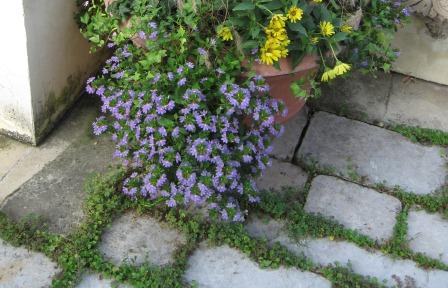
Admitting you’re wrong is difficult. For exhibit A see the recent discussion between me and Jeff over alternative nursery containers. We all like to think we’re open-minded but when push comes to shove we all end up like the Fonz on Happy Days when it comes time to say ‘I was wrrrrr… I was wrrrr…. I was not exactly right.” http://www.youtube.com/watch?v=uwkU8-d1gIk As scientists we’re supposed to be objective and base our judgments on verifiable data and careful and repeatable observations. But, as humans, we all have biases and preconceived notions that are hard to get around.
So here’s a challenge for our Garden Professors readers (and my fellow GP’s too). Give an example of a case where you’ve changed your mind about a landscape or gardening practice or product. And what did it take to change your way of thinking and make you say, “Ya know, maybe I was not exactly right.”
I’ll start. I have long been dubious about is the use of plant growth retardants (PGR’s) on landscape plants. PGR’s are chemicals that reduce plant growth, usually by inhibiting shoot elongation. There are a variety of PGR’s on the market but most work by inhibiting plant growth hormones such as gibberilin or auxins. PGR’s have long been used by bedding plant producers to make plants more compact and easier to handle and ship. One PGR, paclobutrazol, has been heavily marketed in recent years to control growth in landscape trees and shrubs. The effectiveness of paclobutrazol at controlling plant growth has been well established in the literature, though there are some exceptions. My long-held skepticism toward the landscape application of PGR’s stems from a couple factors. First, the marketing claims are pretty fantastic: Not only does it control growth but it improves drought tolerance, heat tolerance, insect resistance, and disease resistance (no word on how it does on getting spots out of rugs). Second, just because something works on containers of annuals in a greenhouse doesn’t mean it will work on trees and shrubs in the field with variable soils, weather, etc. Third, why bother? If something is growing too fast; back off the fertilizer, head it back with the Felco’s, or take it out and put something more appropriate there.
What changed my mind. I’ve seen a couple of effective applications of PGR’s on trees and shrubs that have made me re-evaluate my opinion. One was at a program at the Indiana Arborists Association a couple years ago. The study tracked pruning cycles following utility line clearance pruning. They found that treating trees with paclobutrazol following pruning reduced re-sprout growth and extended the cycle time between pruning by 2 to 3 years – which is a big deal to utility arborists. More recently, I’ve been observing shrubs here on campus that our landscape service group has been treating with paclobutrazol after pruning. Typically many shrubs are rejuvenated after pruning and put on a big flush of growth. The PGR application was effective in keeping this in check. (Some examples with burning bush appear below). Even to my highly skeptical eye, the treated plants just looked a heck of lot better than the untreated.
Do I believe all the marketing claims made about PGR’s for landscape plants? No. But for extending pruning cycles and keeping plants in check, I have to admit I was not exactly right.

Burning bush with PGR app.

Burning bush without PGR app. (Note treated and untreated were growing in same bed)

By controlling growth after pruning PGR application can help keep these shrubs in line and lengthen the time between pruning cycles.








